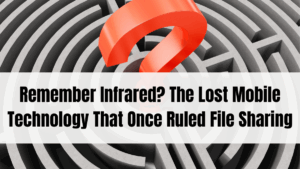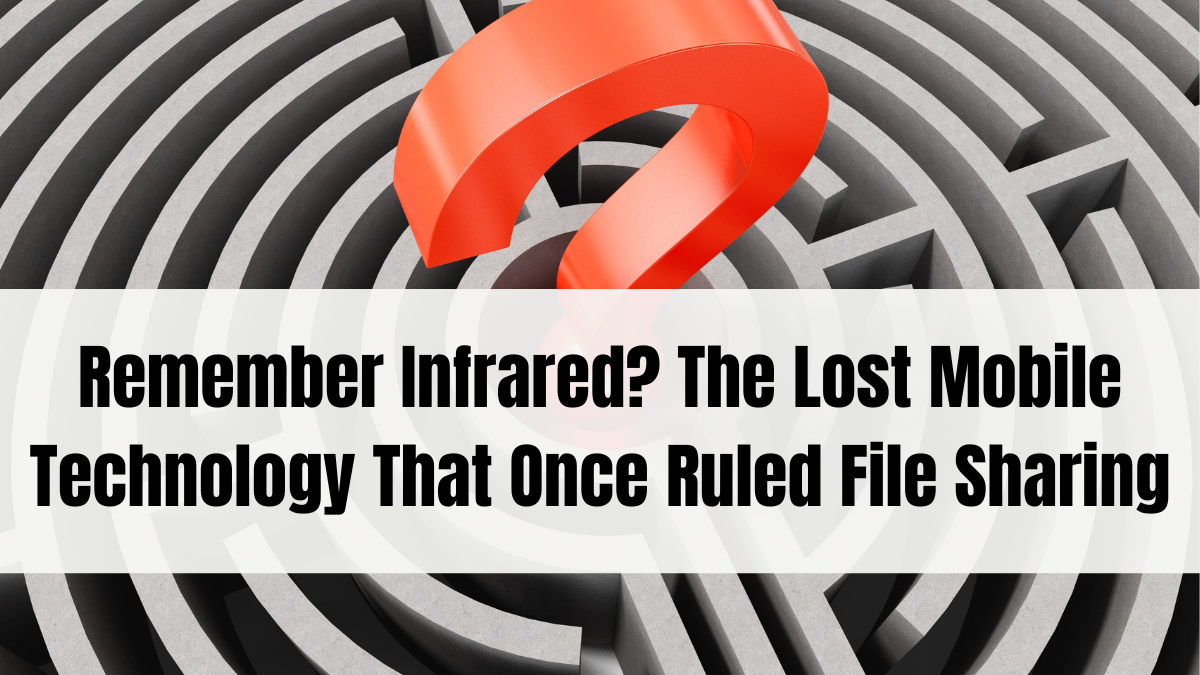Once upon a time, before Wi-Fi and Bluetooth became the norm, Infrared Mobile Technology was the king of file sharing. From 2000 to the mid-2000s, anyone with a Nokia, Motorola, or Sony Ericsson phone likely used infrared (IR) to transfer ringtones, pictures, and even contact cards. But by 2025, it’s become a distant memory—a ghost of mobile past. So what exactly was infrared tech, how did it work, and why did it disappear from our pockets?

How Infrared Mobile Technology Worked
Infrared mobile technology relied on line-of-sight communication between two devices. Think of it like a TV remote—two phones had to be closely aligned, with their infrared ports pointing at each other, often just a few centimeters apart. Once connected, small files like 50KB ringtones or 100KB wallpapers could be transferred—albeit slowly. This short-range transfer method was often interrupted if you moved your phone even slightly. Still, in the early 2000s, it felt like magic.
Peak Popularity in Early 2000s Phones
The rise of infrared mobile technology coincided with the explosive popularity of mobile phones among teens and professionals alike. Infrared was cheap for manufacturers to install, required no pairing process, and worked without mobile data. From Nokia’s 6600 to the Sony Ericsson T610, IR ports were standard on most high-end phones. It was especially beloved in countries like India and Indonesia, where users eagerly swapped polyphonic ringtones and Java games using IR beams.
Why Infrared Faded from Mobile Devices
The fall of infrared wasn’t sudden—it was a gradual decline fueled by better technology. Bluetooth, introduced commercially around the same time, allowed faster speeds and wireless communication without line-of-sight. Wi-Fi Direct, cloud sharing apps, and eventually AirDrop and Nearby Share took over the same job. Compared to them, infrared mobile technology felt clunky and slow. By the late 2000s, phone manufacturers started ditching the IR ports entirely, except in a few niche models used as TV remotes.
Infrared’s Legacy in Mobile Evolution
Although it’s no longer a standard mobile feature, infrared played a crucial role in pushing the idea of wireless file sharing into the mainstream. It taught an entire generation how to send content without cables and made casual content sharing a social activity. This paved the way for Bluetooth and modern sharing apps. Even now, some smartphones still include IR blasters—not for file sharing, but to control home appliances, thanks to its reliable low-power design.
Nostalgia and Modern Curiosity
Tech enthusiasts today look back on infrared mobile technology with nostalgia. Some even collect old phones to re-experience this long-lost feature. Forums and YouTube channels dedicated to retro tech still feature videos explaining how to use IR. For today’s Gen Z, who grew up with cloud-based file transfer, the idea of aligning phones to share a 100KB MP3 file might seem absurd. But for millennials, it remains a sweet memory of schooldays and early tech exploration.
Could Infrared Ever Make a Comeback?
Unlikely—but not impossible. While not suited for modern data-heavy transfers, infrared is still used in healthcare, industrial automation, and some smart home setups. It’s power-efficient and less prone to interference. However, as far as smartphones go, infrared mobile technology will likely remain a relic of simpler, slower times—fondly remembered but technologically outpaced.
FAQs
What was infrared mobile technology used for?
Infrared mobile technology was primarily used for transferring files such as ringtones, contact cards, and images between mobile phones in the early 2000s.
Why did infrared disappear from phones?
It became obsolete due to the arrival of faster and more convenient wireless technologies like Bluetooth, Wi-Fi Direct, and mobile data-based sharing apps.
Was infrared safer than Bluetooth?
Infrared required physical proximity and line-of-sight, making unauthorized access less likely. However, its range and speed were very limited compared to Bluetooth.
Do any phones still use infrared today?
Some modern smartphones include infrared blasters, but these are used for controlling TVs and appliances—not for file sharing.
Can you still use infrared for file transfer today?
Technically, yes—if you have two old phones with functioning IR ports. But most modern devices no longer support it.
Click here to know more.
